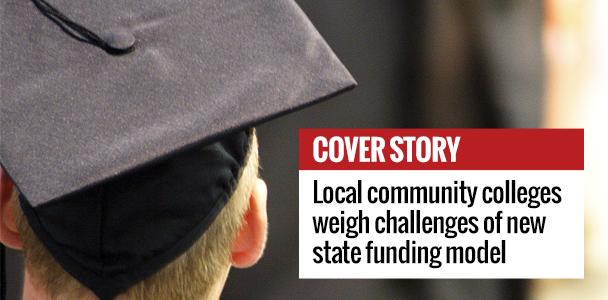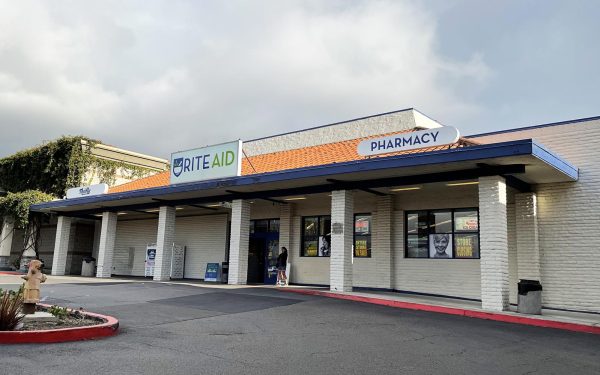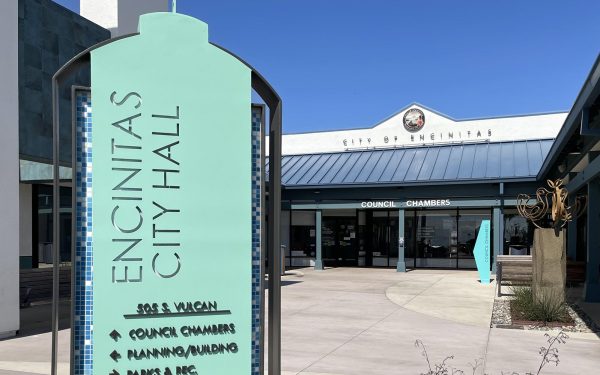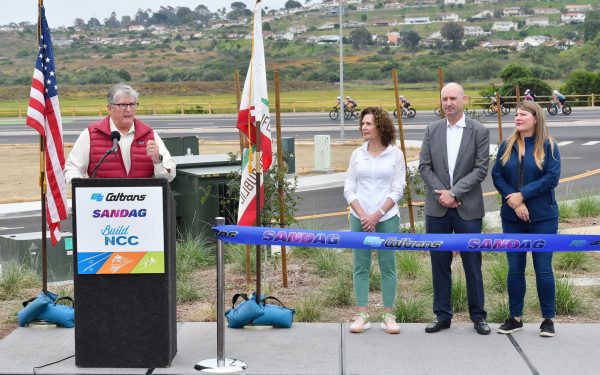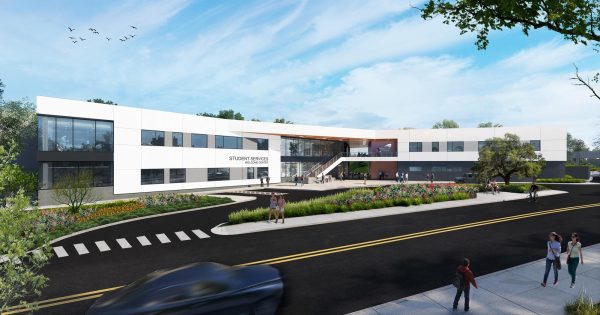Local community colleges weigh challenges of new state funding model
Focus shifting to student success outcomes over emphasis on enrollment numbers
The purpose of community college lies in its funding, and that model is undergoing some key changes.
California community colleges are moving away from a purely enrollment-based funding formula to a mix of enrollment and student outcomes. After a hold-harmless period, the funding metrics for the state’s community colleges in 2021 will break down into 60 percent full-time-equivalent students (FTES) enrolled in classes, 20 percent to student outcomes such as degree completion and transfers, and an additional 20 percent based on student needs. For now, 70 percent of that funding is based on FTES and the other 30 percent from student success metrics.
The MiraCosta Community College District, with campuses in Oceanside and Cardiff, isn’t as reliant on that enrollment-related formula since its funding is mostly property-tax driven, which could buffer any impact from the revised formula that other districts might face.
Roger Schultz, superintendent/president of Mt. San Jacinto College north of Temecula, explained that part of the motivation to change the funding formula was that FTES incentivizes simply filling as many seats as possible, whereas the new funding formula also factors in student success.
“Rather it’s course completion, career tracking or an associate degree for transfer; it should lead to a higher completion of those identified outcomes, as opposed to attendance, which may not lead to that desired outcome,” Schultz said.
Evan Hawkins, the executive director of the Faculty Association of California Community Colleges, said he worries that incorporation of student success metrics could lead to unexpected consequences.
One of those potential consequences was an anecdotal account of some community college districts awarding degrees that students never applied for after leaving their college in order to hit metrics and game their funding.
“We see that as being very problematic for a number of reasons; it certainly doesn’t help students achieve their educational goals in any way and it creates these bad incentives,” Hawkins said. “We’re really concerned about what this is going to mean for how districts approach what they offer to their students.”
That said, Hawkins acknowledged that funding purely based off FTES presents its own set of challenges, which is evident in many community college districts struggling with enrollment as is often the case when the economy is on an upswing.
“We don’t necessarily disagree that we need to reform the way our colleges are funded, we just don’t think performance-based funding will get us there,” Hawkins said.
Sharing a similar sentiment, MiraCosta College history professor and Academic Senate President Brad Byrom explained that grade inflation — pushing faculty to pass more students — could be one of the unintended consequences of factoring student outcomes into community college funding.
“The problem is that it leads to other issues. For example, it leads us down a path to potentially grade inflation,” Byrom said. “It puts the emphasis more on giving passing grades than learning, and that’s the concern that most faculty have with this issue.”
On the other side of the coin, though, Schultz explained that there needs to be a robust dialog between faculty and administrators on “what our students need to be successful upon exit” and how they can adjust their curricula to facilitate that.
To Schultz, part of paving the pathway for student success is streamlining class requirements to ensure that students earn degrees in two years. He explained this by giving an anecdote about how class schedules can be like a restaurant with too many items on the menu.
“I couldn’t even order off the menu because there were so many items, that’s often the way our schedule of classes is,” Schultz said.
When you change the way an organization receives revenue, revenue doesn’t just happen. You have to make changes to your policies to earn that revenue.
— Bonnie Ann Dowd, San Diego Community College District executive vice chancellor of business and technology services
Bonnie Ann Dowd, executive vice chancellor of business and technology services at the San Diego Community College District, pointed out that the purpose of community college has always been to provide access — not every student is in and out in two years and they’re not all there for a degree.
“Do I think it’s bad or good, I couldn’t really say,” Dowd said. “On a personal level, I was a community college student in the New York system; I took a class to learn what I was doing at my job, and I never had it in my mind that I was going to get an associate’s degree, but lo-and-behold I did, and a doctorate.”
Dowd attributed the challenge of implementing the new model to how significantly it differs from the previous model and its speedy implementation. This could put many community colleges in a position where they would need to change and update the support services they provide to students.
“When you change the way an organization receives revenue, revenue doesn’t just happen. You have to make changes to your policies to earn that revenue,” Dowd said.
Though MiraCosta College isn’t as reliant on that formula due to its status as a community funded college, Superintendent/President Sunita Cooke explained that the college faces the same issues with supporting students through financial and other needs.
We want our student outcomes to improve even if our budget isn’t dependent on it.
— Sunita Cooke, MiraCosta College president/superintendent
“We want our student outcomes to improve even if our budget isn’t dependent on it,” Cooke said.
Part of improving those student outcomes is often incentivizing students to enroll full time and complete their degree in two years. That said, Cooke also acknowledged that students within California’s community college system contend with a higher cost of living.
Part of how MiraCosta is dealing with this, along with many other community colleges in California, is through a two-year free tuition promise to students. MiraCosta, Palomar College in San Marcos and the San Diego Community College District all offer such California Promise programs.
“Free enrollment is a start, but most of our students struggle with costs that aren’t currently covered by federal financial aid or scholarships. It’s really about living in California and getting what you need,” Cooke said.
To Hawkins, this cost of living problem complicates the legitimacy of a portion of the funding being based on student success, especially in districts with high populations of part-time and working students.
“All these things that will take part-time students longer to accomplish, that’s going to mean these districts will receive less funding if they rely on that student population,” Hawkins said. “Community colleges are open access, they’re supposed to be for everybody; and particularly a working student base really needs help, not to be penalized.”
The unintended consequence from this is what Hawkins described as a system that “really creates winners and losers.”
Joel Vaughn is a North County freelance writer
encinitas current




